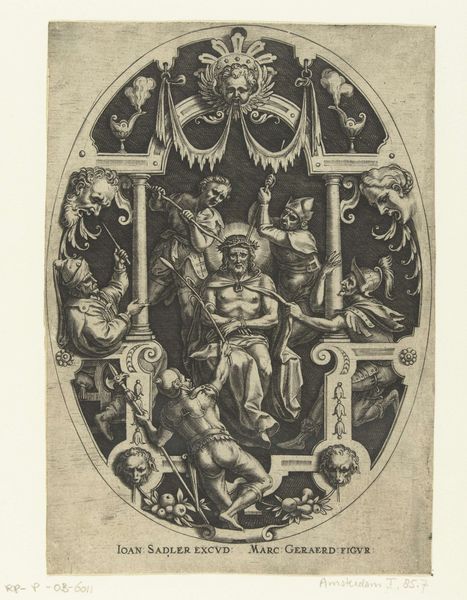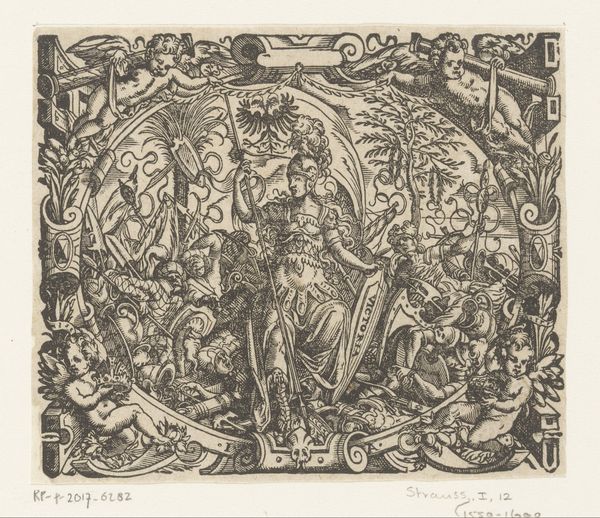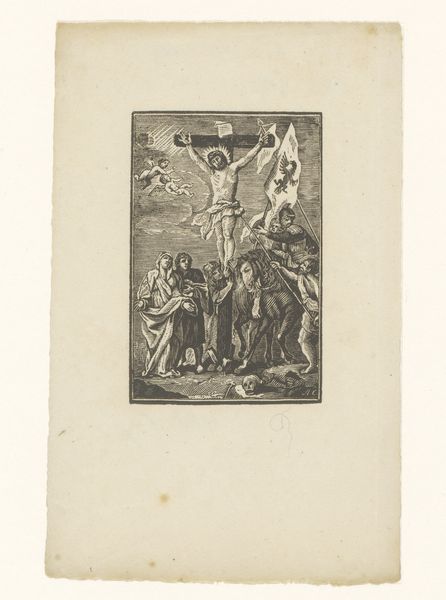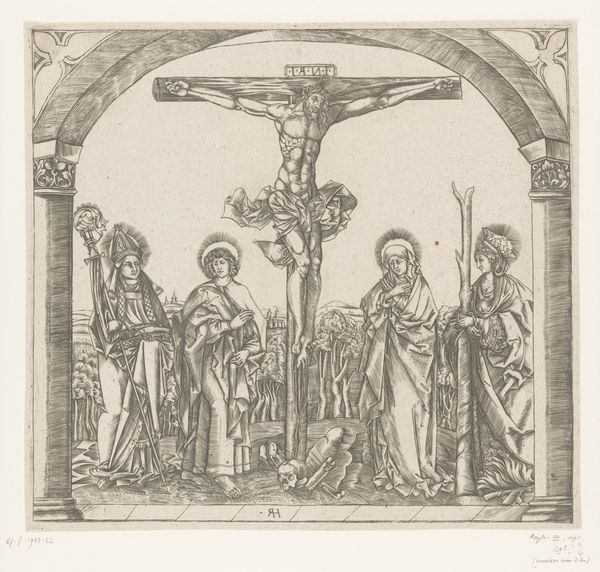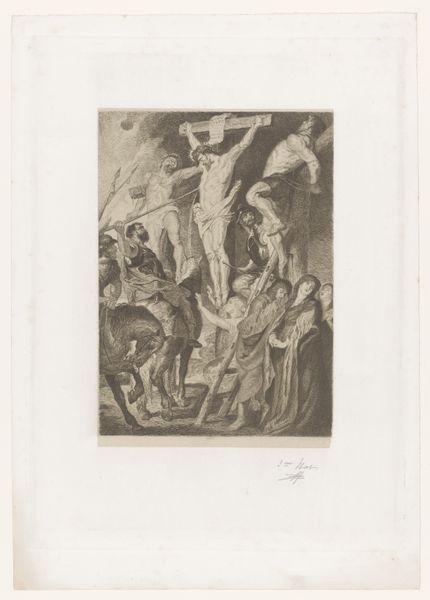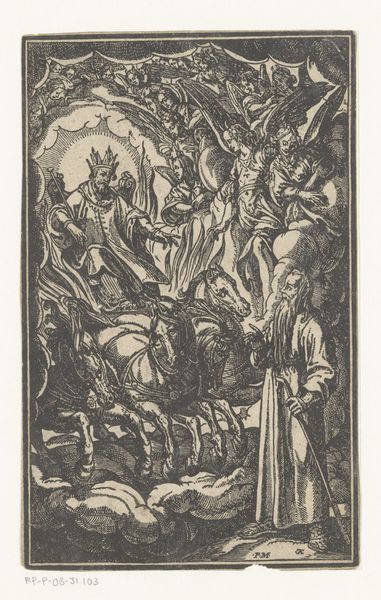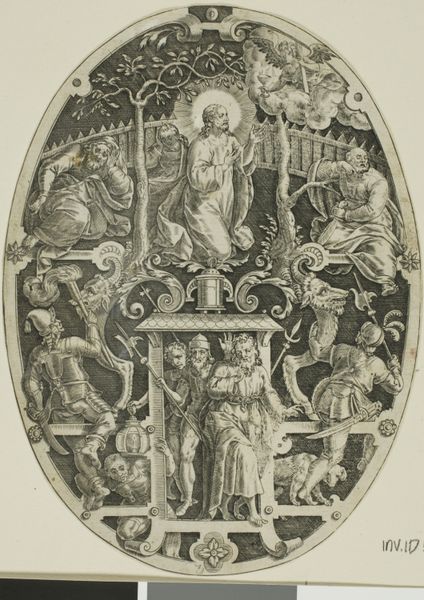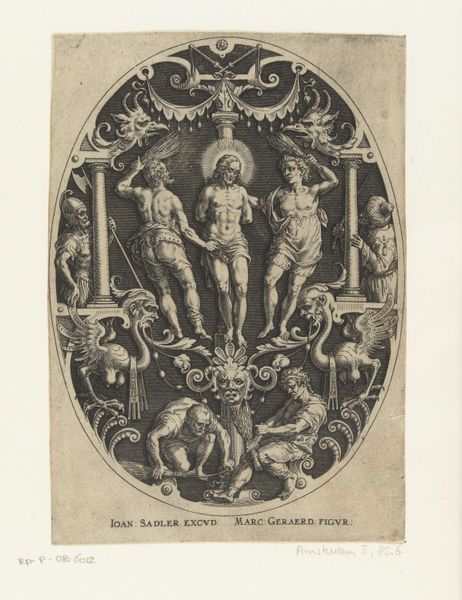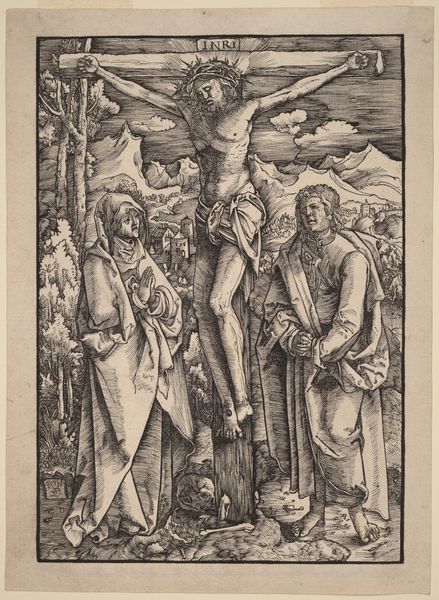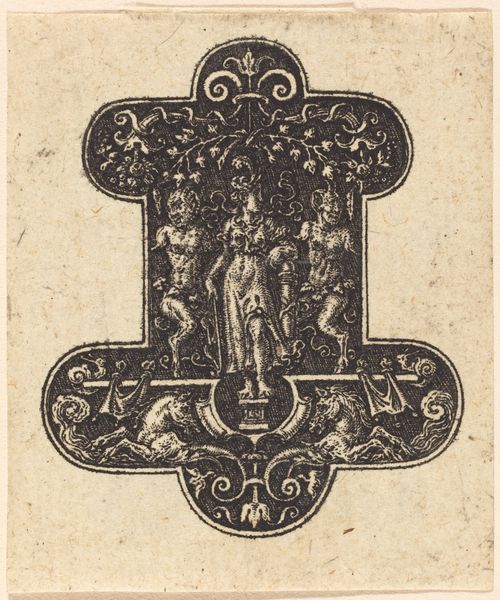
Keurvorst van Saksen en Martin Luther met Christus aan het kruis c. 1661
0:00
0:00
Dimensions: height 117 mm, width 157 mm
Copyright: Rijks Museum: Open Domain
This 17th-century print by Monogrammist GK depicts the Elector of Saxony and Martin Luther with Christ on the Cross, and it's made using a technique called engraving. In engraving, the artist uses a tool to cut lines into a metal plate, which is then inked and printed. Look closely, and you can see how the density and direction of these lines create the image. The stark contrast between black and white not only gives the image a dramatic intensity but also speaks to the social context in which it was made. Prints like this were relatively inexpensive to produce and distribute, making them a powerful tool for spreading religious and political ideas during the Reformation. The act of engraving itself – a laborious, meticulous process – mirrors the dedication and discipline that were valued in religious life. Considering the materials, the making, and the context allows us to fully appreciate the meaning and impact of this seemingly simple artwork.
Comments
No comments
Be the first to comment and join the conversation on the ultimate creative platform.

